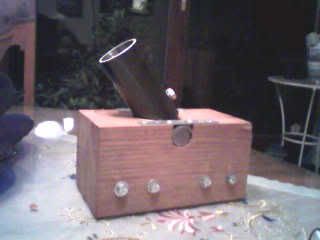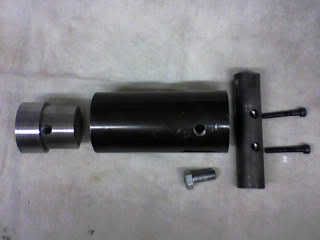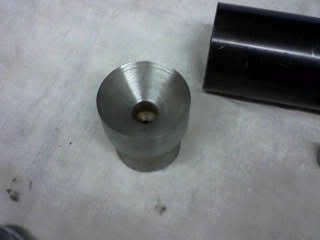- Joined
- Dec 25, 2011
- Messages
- 9,369
- Reaction score
- 4,549
I made my first cannon in high school shop class by drilling out a one inch hole in a foot long piece of sold cold rolled steel on the metal lathe. I used spark plugs patched to bore diameter for projectiles.
When making the bowling ball mortar a bit of research was done we found that high pressure oxygen tanks were made of 4140 heat treated steel after being swaged to shape and the nozzle threaded. We decided this would be a good safe tube to use for the mortar we wanted. The idea came from other bowling ball mortar users.
This is high intensity gun barrel quality steel used in modern shotguns and rifles. While quite thin by cannon standards they are still .312 thick in the thinnest part of the wall up barrel and a good bit thicker in the all important breech area.
Our mortar also uses a secondary solid steel cup nested in the breech to carry the full charge so we have a double wall in the firing chamber.
Probably not necessary for strength enhancement but it does seem to make the powder light and burn more efficiently.
A striker mechanism was fabricated to thread into the regulator hole and a musket nipple fit to light the fire.
A 25 foot lanyard is used to pull the striker release lever.
I don't worry as much about a burst barrel as I do about loading after it has been fired.
I wait five minutes between loadings, don't use any wadding and load from a rope ball sling rigged up to keep one out of line with the bore as the ball is lowered.
When making the bowling ball mortar a bit of research was done we found that high pressure oxygen tanks were made of 4140 heat treated steel after being swaged to shape and the nozzle threaded. We decided this would be a good safe tube to use for the mortar we wanted. The idea came from other bowling ball mortar users.
This is high intensity gun barrel quality steel used in modern shotguns and rifles. While quite thin by cannon standards they are still .312 thick in the thinnest part of the wall up barrel and a good bit thicker in the all important breech area.
Our mortar also uses a secondary solid steel cup nested in the breech to carry the full charge so we have a double wall in the firing chamber.
Probably not necessary for strength enhancement but it does seem to make the powder light and burn more efficiently.
A striker mechanism was fabricated to thread into the regulator hole and a musket nipple fit to light the fire.
A 25 foot lanyard is used to pull the striker release lever.
I don't worry as much about a burst barrel as I do about loading after it has been fired.
I wait five minutes between loadings, don't use any wadding and load from a rope ball sling rigged up to keep one out of line with the bore as the ball is lowered.







